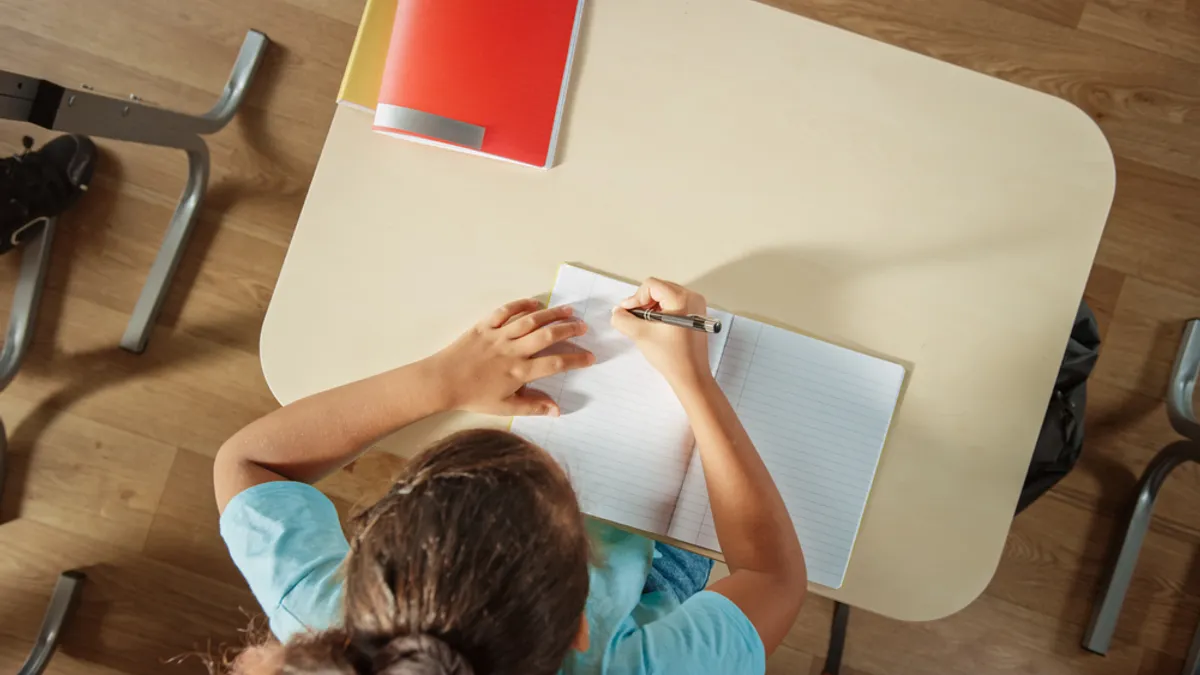In 2022, the National Center for Education Statistics (NCES) conducted a special administration of the NAEP long-term trend (LTT) reading assessments for age 9 students to examine student achievement during the COVID-19 pandemic. Average scores for age 9 students in 2022 declined 5 points compared to 2020. This is the largest average score decline in reading since 1990. To reverse this trend and get learners on track, Structured Literacy needs to be a driving force in every classroom.
What Is It
Backed by science and strengthened through consistent practice, Structured Literacy is a meticulously crafted blueprint for building confident, capable readers and writers, step by step, skill by skill. Specifically, it’s an evidence-based approach to reading and writing instruction that is explicit, systematic, and comprehensive by emphasizing the foundational literacy skills in a deliberate and methodical way. By breaking down the daunting task of learning into clear, manageable steps, confusion is transformed into clarity and regression into progress.
How It Works
Structured Literacy bridges research and reality, turning the Science of Reading into something teachers can implement with precision and purpose. To become proficient readers, students must have various reading components work together seamlessly, aiding both decoding and comprehension. Key elements like phonemic awareness, phonics, and automaticity are crucial for decoding words quickly and accurately. However, decoding by itself isn’t sufficient — students also need robust language comprehension abilities, such as vocabulary, syntax, background knowledge, and inferencing, to fully grasp and apply what they read.
For teachers to effectively enhance students' ability to read and comprehend a range of texts, focusing on the strands of the reading rope during instruction is essential. Moreover, explicit instruction plays a vital role in learning to read, as it eliminates uncertainty by providing clear, step-by-step guidance that helps students understand both what they are learning and why it matters. This method is especially beneficial for young learners and those facing reading challenges, as it breaks down complex skills — such as decoding words or grasping grammar — into smaller, more manageable parts. Through strategy modeling, structured practice, and immediate feedback, explicit instruction builds students' confidence and proficiency in foundational skills, paving the way for fluent and meaningful reading.
Structured literacy outlines the tools and strategies needed to clearly teach the competencies represented in Scarborough’s Reading Rope:
1. Word Recognition
This strand focuses on the mechanics of reading, including:
- Phonological Awareness: Hearing and identifying sounds in words. For example, children learn to rhyme, break sentences into words, and divide words into syllables. These skills lay the groundwork for decoding unfamiliar words.
- Decoding: Students use their knowledge of letter-sound relationships (phonics) to read words. For example, learning that "c" sounds like /k/ helps them read words like cat. This skill builds accuracy and confidence in reading.
- Sight Recognition: As students practice, they begin recognizing common words instantly, like the or and. This automatic word recognition, known as orthographic mapping, frees up mental energy to focus on understanding the text.
2. Language Comprehension
Decoding words is only part of the process. To truly understand what they read, students need strong language comprehension skills, including:
- Background Knowledge: Familiarity with a topic helps students make sense of new information. For instance, understanding that “branches” can refer to both tree limbs and divisions of government aids comprehension.
- Vocabulary: Knowing the meaning of words is critical for understanding text. The more words students know, the easier it is for them to grasp complex ideas.
- Language Structures: This involves understanding grammar, sentence structure, and how words work together to create meaning. Mastery of these rules helps readers interpret both literal and implied meanings.
- Verbal Reasoning: Students learn to think critically about text, draw inferences, and understand figurative language.
- Literacy Knowledge: This includes understanding how books and written language work, such as recognizing story elements or knowing how to use headings in nonfiction.
Why It Matters
Statistics show that learning gaps in literacy are a nationwide crisis - for example, only 32% of Grade 4 students across the country are reading proficiently. Structured literacy isn’t just a teaching method — it’s a lifeline, a powerful key that unlocks the doors of reading for all students, especially those who struggle to grasp its complexities. Like a master craftsman shaping the foundations of a great structure, this approach meticulously builds both the mechanics of reading — the art of decoding words — and the deeper understanding of language — the symphony of comprehension. The result? Students who don’t just skim texts but immerse themselves in stories, ideas, and knowledge, and become lifelong readers.






 Dive Awards
Dive Awards




